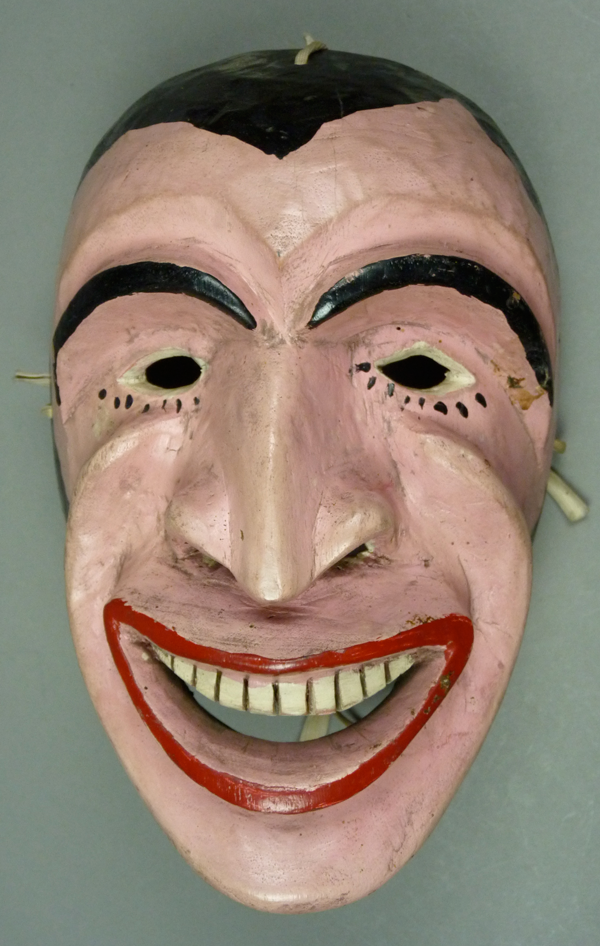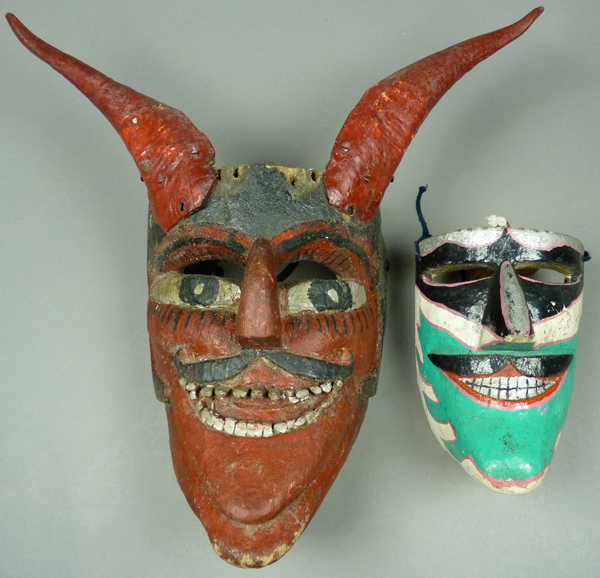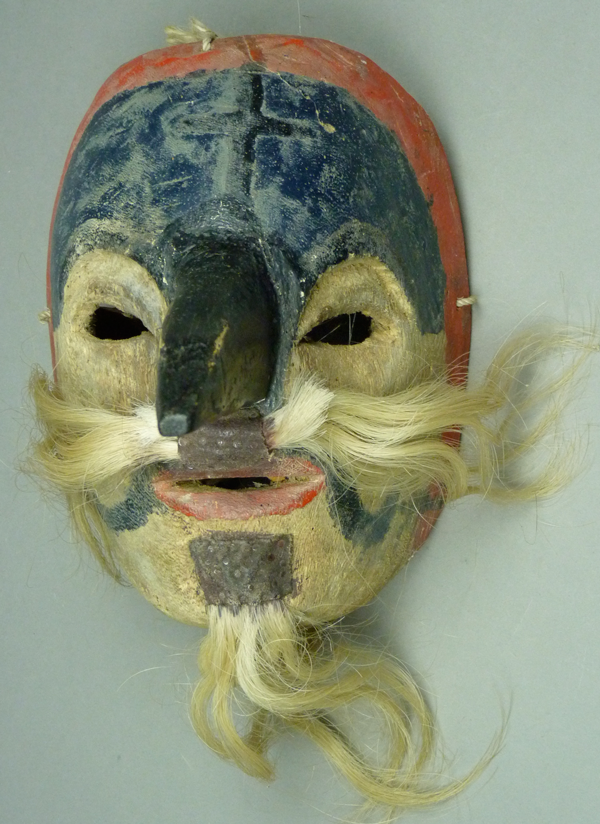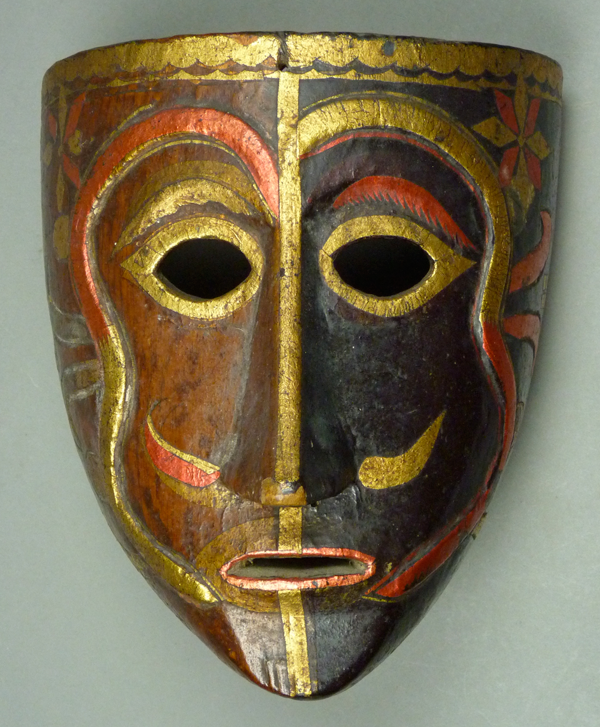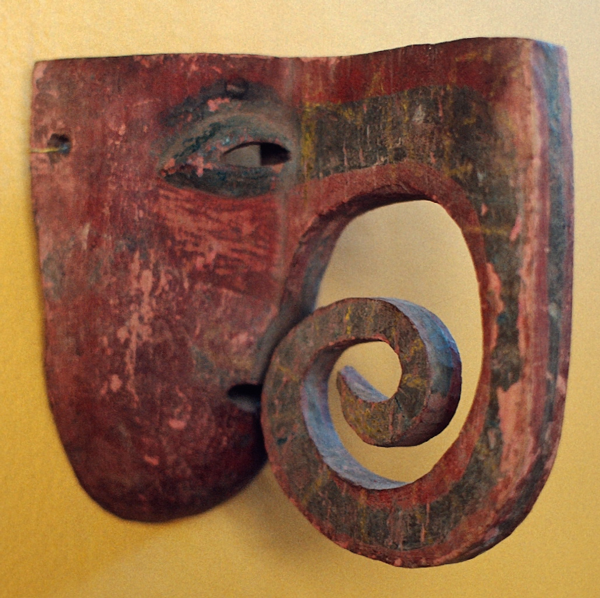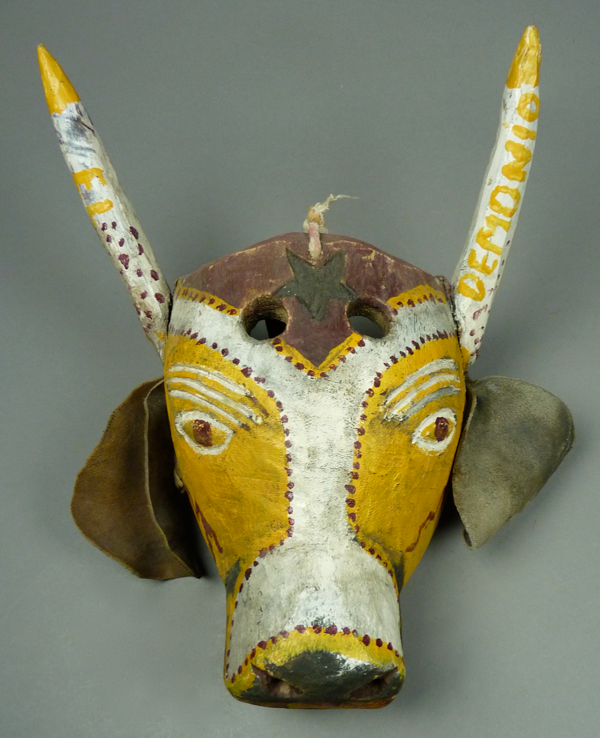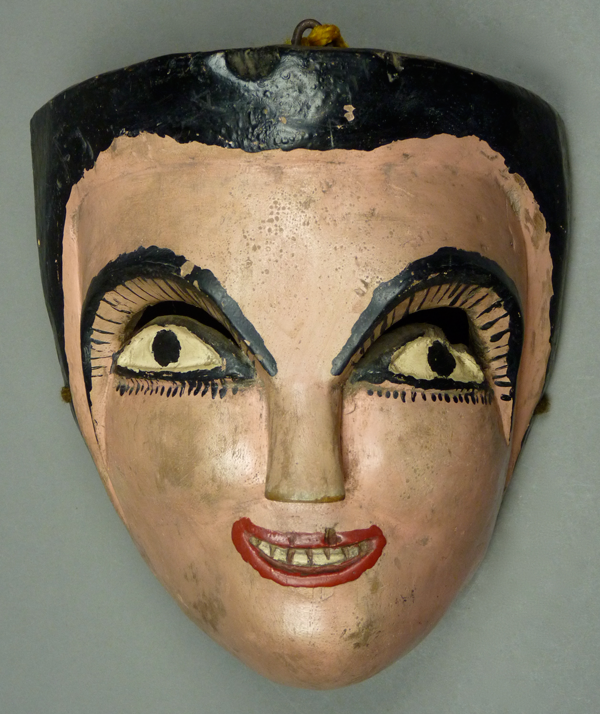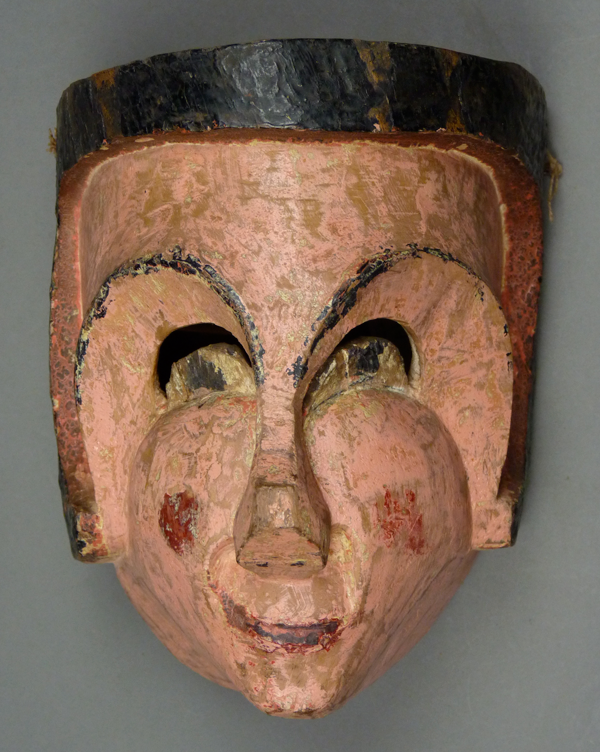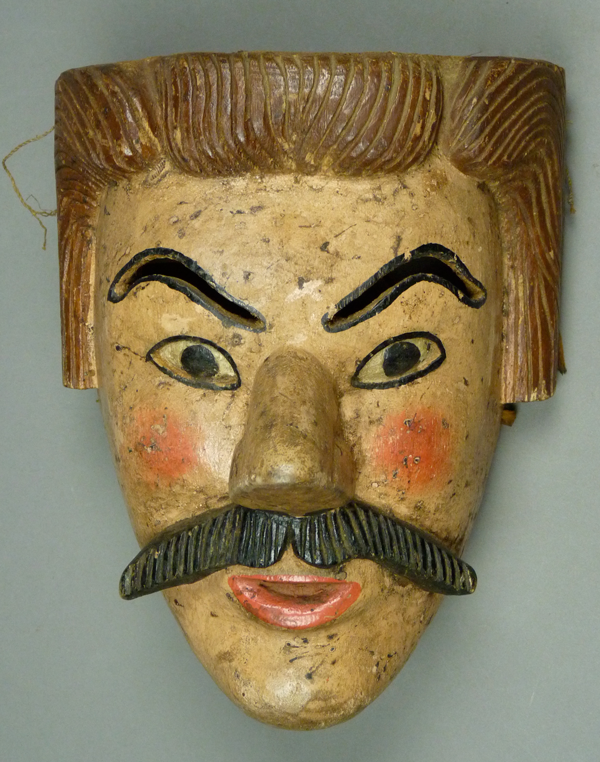One of the goals during my recent review of the Urmston collection was to learn from masks that were relatively unfamiliar to me. One discovery was that the class of Azteca masks may be broader than I had imagined. Briefly, Azteca masks are but one specialized subset of masks from the Danza de la Conquista. You have seen other varieties of masks from the Conquest dance in recent posts.
Azteca masks have been presented or described in popular books, such as Mexican Masks (Donald Cordry 1981, page 51, Plate 66), Máscaras (Estela Ogazón 1981, page 89) and Tigers, Devils, And the Dance of Life: Masks of Mexico (Barbara Mauldin 1999). These masks portray a Spanish (Caucasian) face that is in contact with a symbolic representation of an Indian enemy; the wearer essentially personifies both sides of the conflict between Nahua (Aztec) Indians and Spanish Conquistadors. In the most usual style, which I will soon illustrate, the tongue of the mask cradles an opposing Indian warrior, but there may be an animal or what appears to be a map of an enemy territory instead. Cordry believed that these masks came from the Mexican State of Hidalgo. Here is a link that shows the photo of two of these masks in Cordry’s book, for the benefit of those who don’t have that book. I am sorry that this image of the Azteca masks (on the lower right) is so small.
http://pictures.abebooks.com/FLAMINGOBOOKSEPHEMERA/md/md15792885323_5.jpg
Barbara Mauldin consulted Jaled Muyaes and Estela Ogazón and repeated their report that these were masks from Veracruz. She included a dance photo taken by Estela Ogazón in 1991, in Atistace, Veracruz, with this caption—”Conquista masqueraders participating in Carnival celebrations.” That photo (on page 33) shows two dancers, one wearing what appears to be a conventional Azteca mask of a Conquistador encountering an Indian while the other wears a truly unusual Azteca mask. As you will see, the latter is a wickedly amusing example in which the mask’s tongue appears to support a Mermaid’s breast! I had purchased that mask from Kelly Mecheling of New Orleans in 1995, several years before it appeared in Mauldin’s book, and Kelly had obtained the mask from Jaled Muyaes and Estela Ogazón. I might as well begin with that mask.
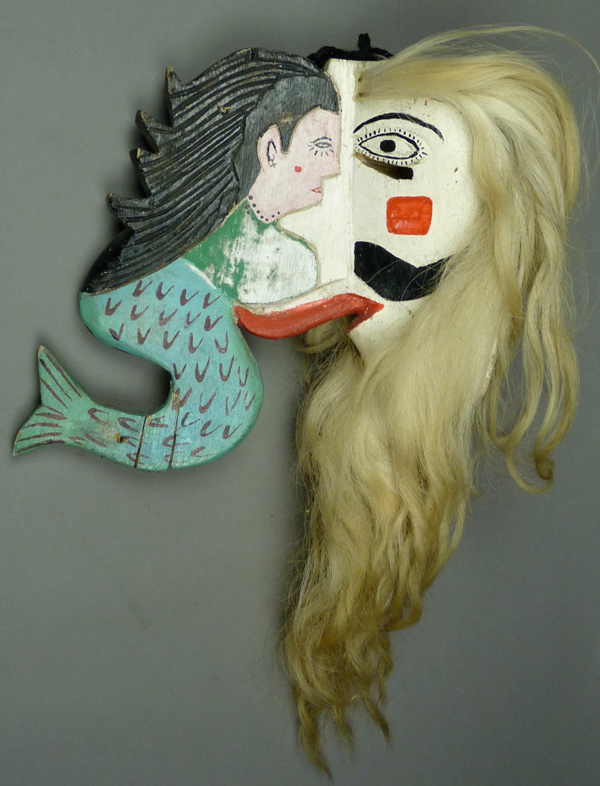
Isn’t this a shocking motif for a dance mask, even though almost anything goes during Carnival. One is tempted to think that this is a fantasy creation, with no connection to an actual performance, but the photo in Mauldin’s book shows it in action. In the photo, the mermaid’s tail appears to be intact, but at some point in the interim it had split and required repair.
Continue Reading →

